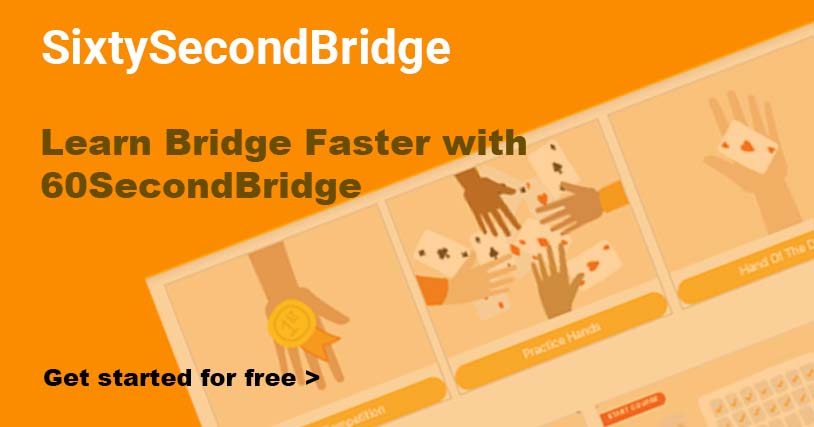HOME > BRIDGE LESSONS > DEFENSIVE BIDDING LESSONS
Balancing Doubles
Balancing Double situations arise when we try to to force opponents to play every hand at a level higher than 2 Spades particularly with good vulnerability for us. Balancing Doubles are a form of Takeout Double, often used in the passout seat (Last person to bid).
This lesson is a brief extract from the interactive lessons and Bridge games available to members:
When is it a balancing double and how do I respond?
Balancing Double Situation
When the opponents try to keep the bidding at low levels, a double in the pass out seat – meaning the last person to bid, is regarded as a balancing double. It may not have the full takeout double strength even if it is that players first opportunity to bid.
Balancing Takeout Doubles
Distribution and strength requirements for a takeout double are lowered in situations when opponents’ previous auction indicates that the partner has high-card strength, but was likely unable to take an action of his own because his distribution was not suitable for a double or an overcall. A balancing double can be made with as little as 8 high card points if both the RHO and the partner have passed the opening bid. Such a situation indicates that partner has strength, but was unable to bid.
Strength Requirements for Balancing Double
Any point range range above 8 HCP. Usage depends on the prior bidding in the auction and the vulnerability. The Doubler always promises holdings of the suits not bid with a guarantee 4 of any unbid major suit if opponents have bid a major and at least 4-3 in the major suits if the opposition have bid only the minors
Responding to A Balancing Double
The response to a balancing double requires better judgment than does bidding over partner’s direct take‑out double. Remember, partner may have made a balancing double on a much wider range of hands; i.e., he/she may not have good support for ail of the unbid suits, and the strength of his/her hand may be considerably below the values required for a direct take‑out double.
- A bid of any unbid suit at the lowest level = 8‑11 HCP’s.
- A jump response showing partner that you have a hand with opening strength points, even if previously passed.
- Jump to 2NT showing a good opening bid with opener’s suit well‑stopped
- Jump to 3NT showing values for a strong 1NT opening with controls in oppositions suit
